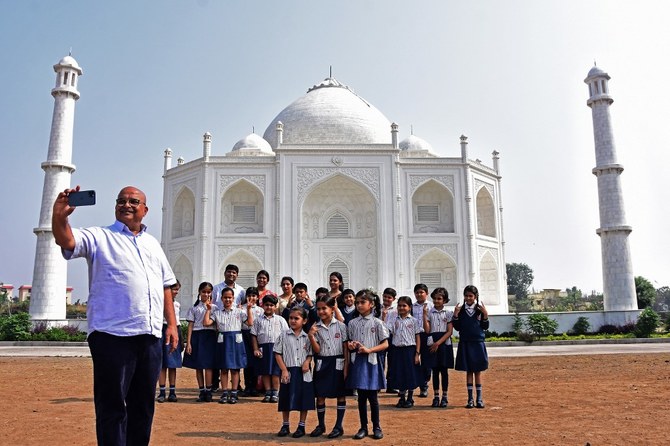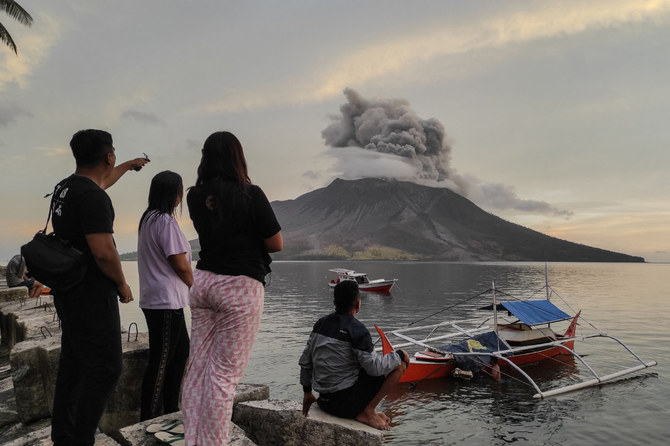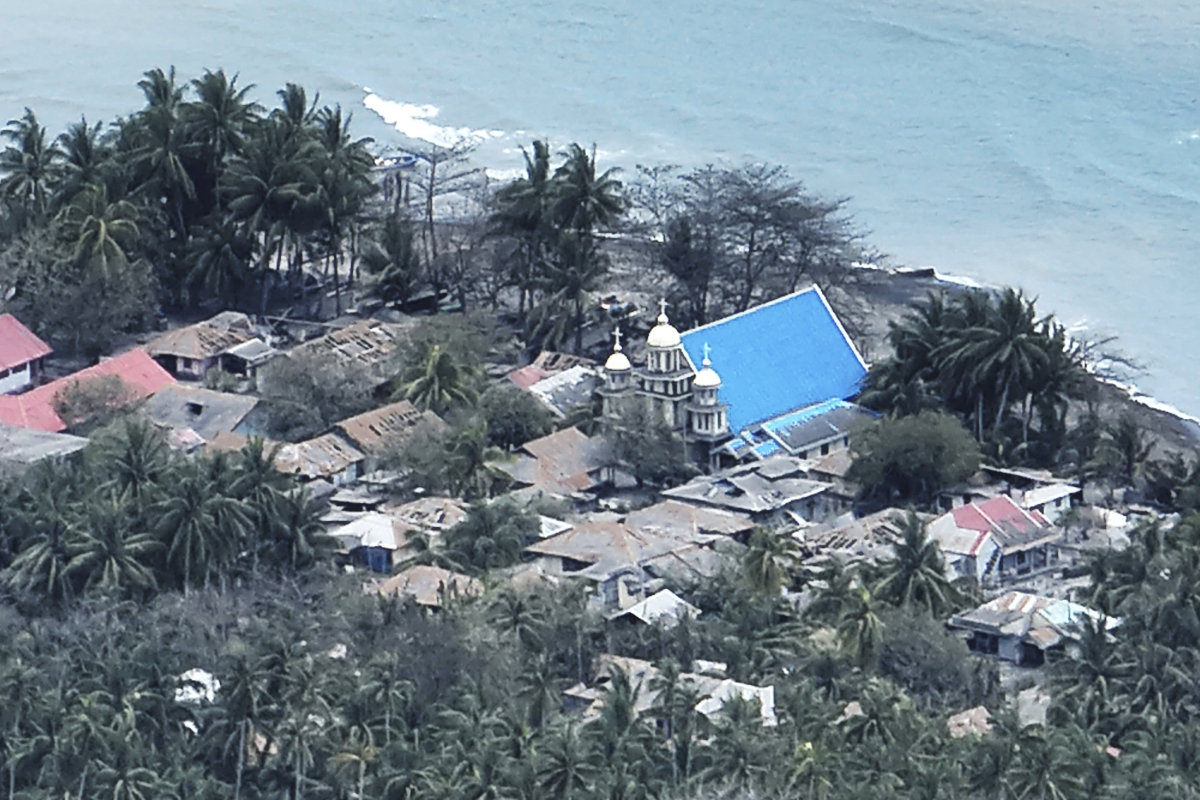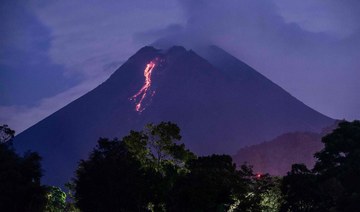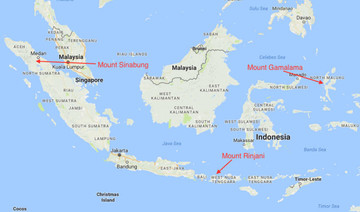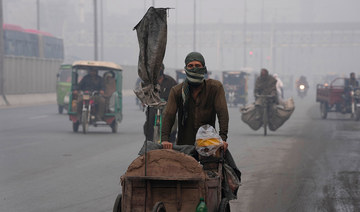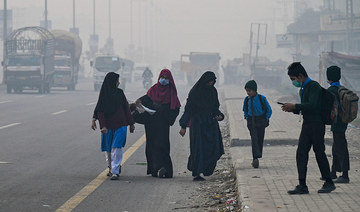NEW DELHI: When Anand Prakash Chouksey and his wife Manjusha decided to build a replica of the Taj Mahal hundreds of kilometers away from where the original Mughal monument is located in Agra, they said they did it to spread a "message of love."
The iconic Taj Mahal in Agra in the northern Indian state of Uttar Pradesh is a white-marble mausoleum built by the 17th-century Muslim emperor Shah Jahan in memory of his wife Mumtaz Mahal.
Known as one of the world's wonders and a "monument of love," the structure was at the heart of a political storm in 2017, when politicians belonging to the country’s ruling Hindu right-wing Bharatiya Janata Party said it did not reflect Indian culture.
That year, the Choukseys decided to build the replica of the world-famous Mughal structure as their home in Burhanpur in Madhya Pradesh, some 800 kilometers away from Agra. It was, they said, their own "message of love among humanity."
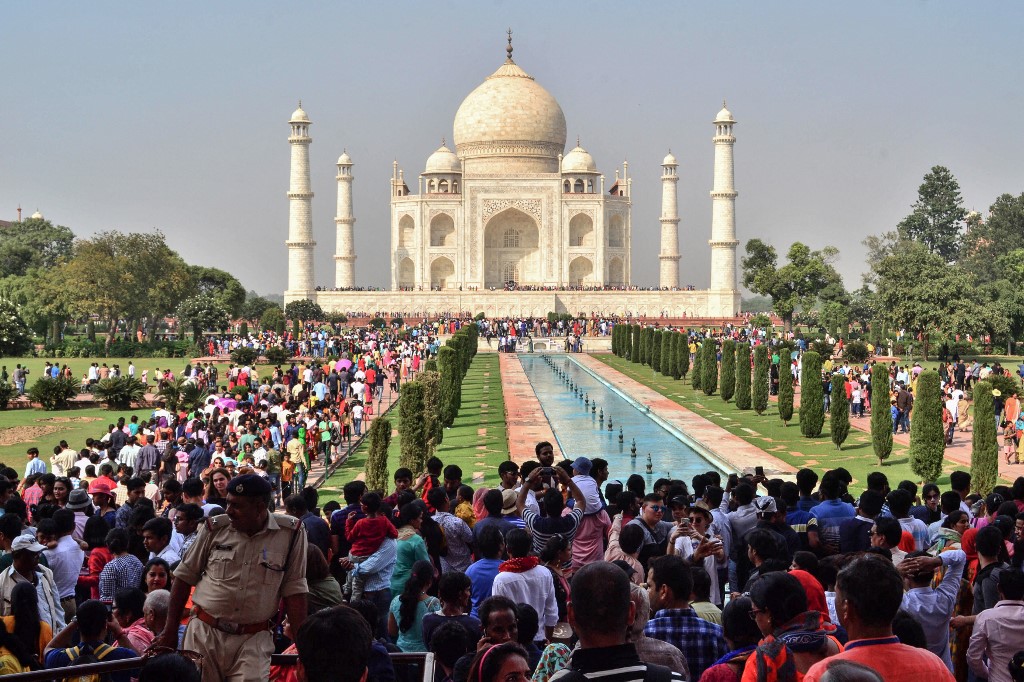
Crowds visit the Taj Mahal complex in Agra in India's Uttar Pradesh on October 20, 2018. (AFP)
"Taj Mahal for us is neither Hindu or Muslim heritage, it is a symbol of love," Manjusha told Arab News of the replica, which was completed last year at a cost of $250,000. It's white marble fittings are from Makrana in Rajasthan, the same place from where marbles used for the original Taj Mahal came.
Educationists by profession, the Choukseys also run a school and a hospital in Burhanpur. Social work, Manjusha said, was the foundation of their relationship.
"Our couple goal is always to spread happiness and love," she added.
Relating a contested historical fact, Chouksey, 52, said Shah Jahan had originally planned to build the mausoleum in Burhanpur, as that was where the emperor's beloved wife died during childbirth.
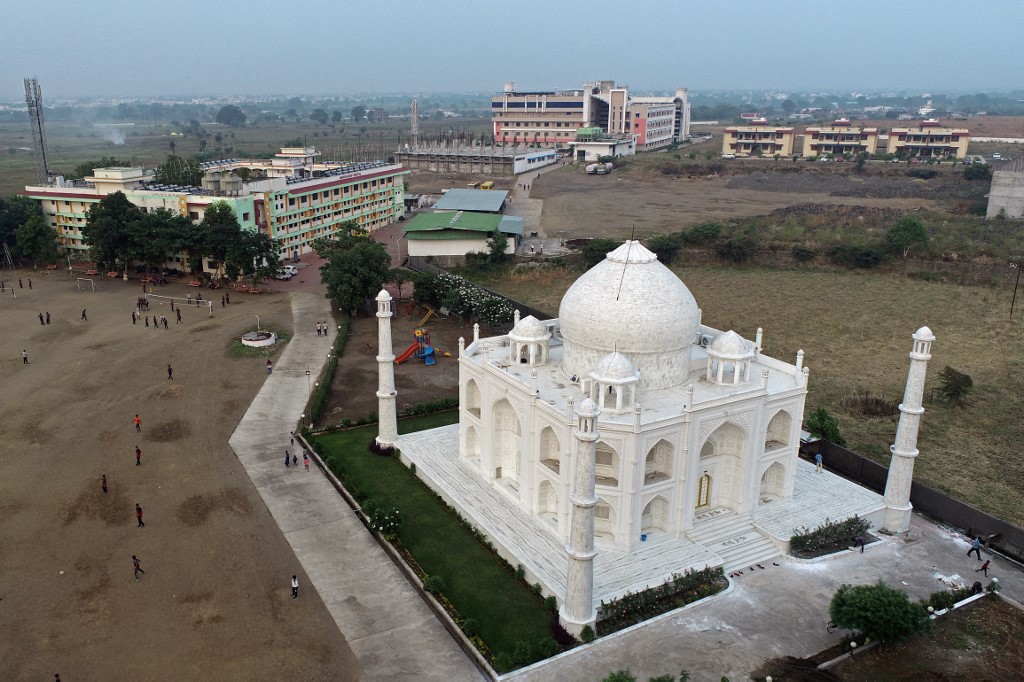
In this photograph taken on November 25, 2021, an aerial view of a replica of the Taj Mahal at Burhanpur in India's Madhya Pradesh state. (AFP)
"It's a strong and popular folklore tradition of Burhanpur that Taj Mahal was to be built here," Prof. Farhat Hasan, a historian from the University of Delhi, told Arab News. However, he added that "Badshahnama," a group of works written as the official history of Shah Jahan's reign, did not mention Burhanpur as one of the potential sites for the mausoleum.
"One of the objectives of constructing Taj Mahal was to make a monument that exhibits imperial sovereignty in full glory and grandeur," Hasan said. "Agra was central to the articulation of imperial sovereignty."
But for Chouksey, the real importance of the building, both the original and the replica, lies in spreading a message of love.
"What is missing in the world is love," he said. "There should be a relationship of respect among people. We should respect each other, and I have made this building to spread this message."
"We want to give a lesson," his wife chipped in, explaining why the couple built the replica, "that we should develop our love and humanity."



